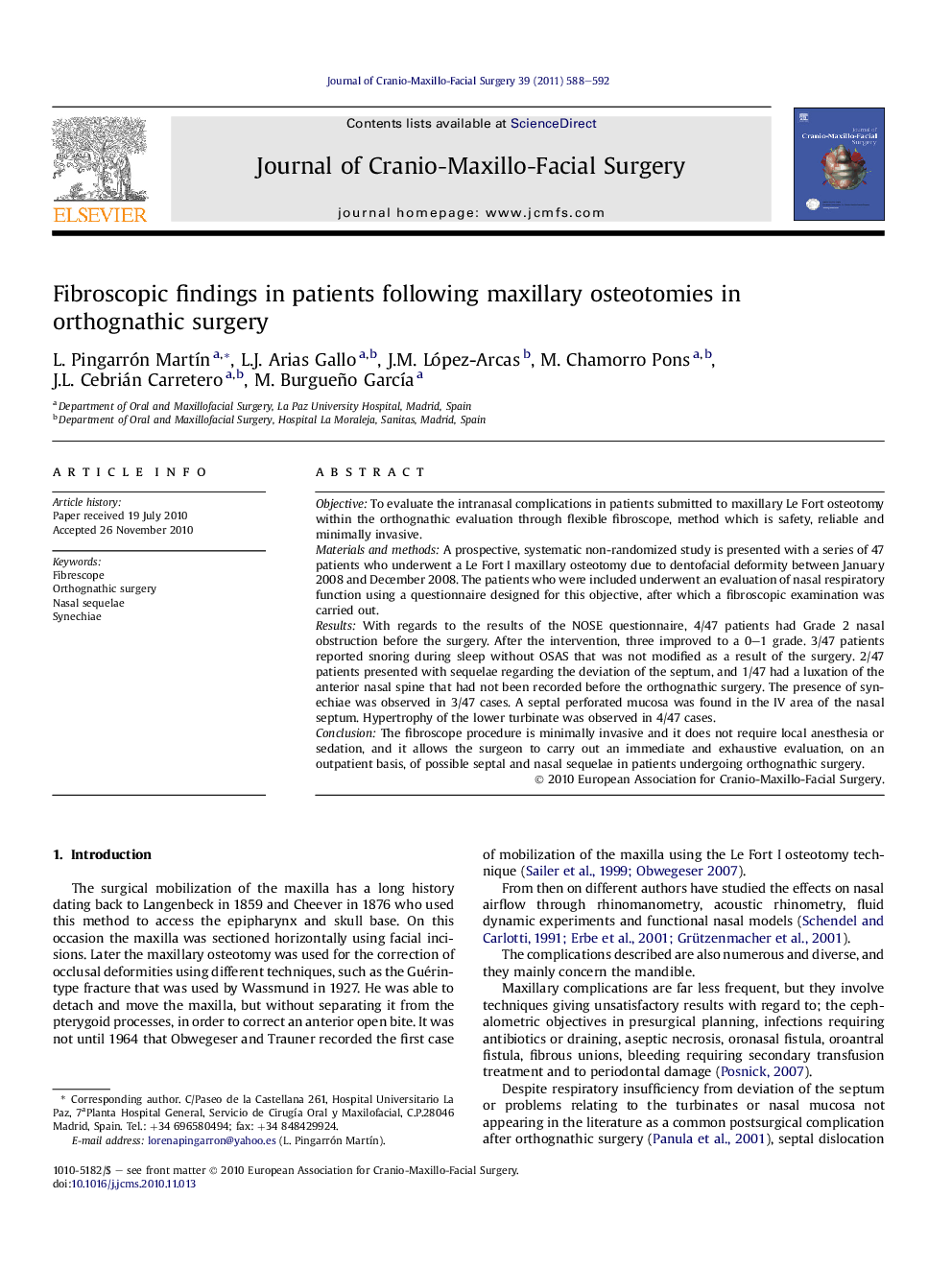| Article ID | Journal | Published Year | Pages | File Type |
|---|---|---|---|---|
| 3143583 | Journal of Cranio-Maxillofacial Surgery | 2011 | 5 Pages |
ObjectiveTo evaluate the intranasal complications in patients submitted to maxillary Le Fort osteotomy within the orthognathic evaluation through flexible fibroscope, method which is safety, reliable and minimally invasive.Materials and methodsA prospective, systematic non-randomized study is presented with a series of 47 patients who underwent a Le Fort I maxillary osteotomy due to dentofacial deformity between January 2008 and December 2008. The patients who were included underwent an evaluation of nasal respiratory function using a questionnaire designed for this objective, after which a fibroscopic examination was carried out.ResultsWith regards to the results of the NOSE questionnaire, 4/47 patients had Grade 2 nasal obstruction before the surgery. After the intervention, three improved to a 0–1 grade. 3/47 patients reported snoring during sleep without OSAS that was not modified as a result of the surgery. 2/47 patients presented with sequelae regarding the deviation of the septum, and 1/47 had a luxation of the anterior nasal spine that had not been recorded before the orthognathic surgery. The presence of synechiae was observed in 3/47 cases. A septal perforated mucosa was found in the IV area of the nasal septum. Hypertrophy of the lower turbinate was observed in 4/47 cases.ConclusionThe fibroscope procedure is minimally invasive and it does not require local anesthesia or sedation, and it allows the surgeon to carry out an immediate and exhaustive evaluation, on an outpatient basis, of possible septal and nasal sequelae in patients undergoing orthognathic surgery.
